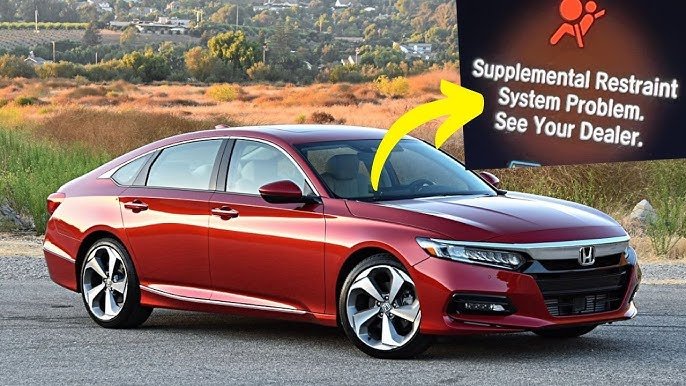A supplemental restraint system problem signifies potential issues with your vehicle’s safety features. It triggers concerns about airbags, seatbelt pretensioners, and related components. This problem demands immediate attention to ensure the effectiveness of these critical safety mechanisms. Ignoring warning signs or diagnostic codes could compromise your safety on the road. Delve into this informative article to gain a better understanding of what does supplemental restraint system problem mean and how to address it effectively.
What Does Supplemental Restraint System Problem Mean?
Welcome to our comprehensive guide on understanding what a supplemental restraint system problem means. If you’ve ever seen a warning light on your car’s dashboard that says “SRS” or “Airbag,” it’s important to know what this means and why it’s crucial to address it promptly.
Understanding the Supplemental Restraint System (SRS)
The Supplemental Restraint System, commonly referred to as SRS, is a crucial safety feature in modern vehicles. The primary components of the SRS include airbags, seatbelt pretensioners, impact sensors, and the electronic control unit (ECU) that manages the system. The purpose of the SRS is to provide additional protection to the driver and passengers in the event of a collision.
How Does the SRS Work?
When a vehicle is involved in a collision, the impact sensors detect the sudden deceleration and send signals to the ECU. The ECU then triggers the airbags to deploy and activates the seatbelt pretensioners. This rapid response helps to reduce the risk of serious injuries in a crash by minimizing the force of impact on the occupants.
Common Signs of a Supplemental Restraint System Problem
Now that we’ve covered the basics of the SRS, let’s discuss some common signs that indicate a problem with the system. If you notice any of the following issues, it’s essential to have your vehicle inspected by a qualified mechanic as soon as possible:
1. SRS Warning Light
One of the most obvious signs of an SRS problem is the illumination of the SRS warning light on the dashboard. This light can indicate a range of issues, from a faulty sensor to a malfunctioning airbag system.
2. Non-Deployment of Airbags
In the event of a collision, if the airbags fail to deploy, it could be a clear indicator of a problem with the SRS. This could put the occupants at risk of more severe injuries in a crash.
3. Intermittent Warning Signals
If the SRS warning light comes on and off randomly, it could be a sign of an intermittent fault in the system. Ignoring such warnings can be dangerous, as the system may not function properly when needed.
Potential Causes of SRS Problems
There are several factors that can contribute to SRS problems, ranging from simple issues to more complex faults. Here are some common causes of supplemental restraint system problems:
1. Faulty Sensors
The impact sensors in the SRS can sometimes fail due to electrical issues or physical damage. When a sensor malfunctions, it may not accurately detect a collision, leading to improper deployment of the airbags.
2. Wiring Problems
Wiring issues, such as loose connections or damaged wires, can disrupt the communication between the components of the SRS. This can result in a failure of the system to deploy the airbags or tension the seatbelts when needed.
3. Malfunctioning ECU
The electronic control unit (ECU) is the brain of the SRS system. If the ECU malfunctions due to software glitches or hardware failures, it can cause the entire system to stop working correctly.
Importance of Addressing SRS Problems Promptly
Ignoring SRS warning signs or delaying repairs can have serious consequences. The SRS is designed to save lives and minimize injuries in accidents, and any malfunction in the system can compromise the safety of the vehicle occupants. Therefore, it’s crucial to address SRS problems promptly to ensure the system functions as intended in the event of a collision.
Final Thoughts
Understanding what a supplemental restraint system problem means is essential for maintaining the safety of your vehicle and its occupants. By being aware of the signs of SRS issues and addressing them promptly, you can ensure that your car’s safety systems are in optimal working condition. Remember, safety should always be a top priority when it comes to driving!
“Supplemental restraint system problem” in Honda Accord
Frequently Asked Questions
What could be the implications of a supplemental restraint system problem?
A supplemental restraint system problem can indicate issues with crucial safety features in your vehicle, such as airbags and seatbelt pretensioners. It highlights a potential risk of these systems not deploying as intended in the event of a collision, compromising occupant safety.
How can one identify a supplemental restraint system problem?
Common signs of a supplemental restraint system problem include the illumination of the airbag warning light on the dashboard, constant beeping sounds, or error messages related to the SRS system. These indicators should not be ignored and must be promptly addressed by a qualified technician.
What steps should be taken if a supplemental restraint system problem is detected?
If you suspect a supplemental restraint system problem, it is essential to have the vehicle inspected by a certified mechanic or at a dealership. They will diagnose the issue using specialized tools and expertise to accurately pinpoint the cause and recommend necessary repairs or replacements to ensure the system’s functionality.
Final Thoughts
In conclusion, a supplemental restraint system problem refers to issues with the safety systems in a vehicle, such as airbags and seatbelt pretensioners. These problems can compromise the effectiveness of these systems and potentially put passengers at risk in the event of a collision. It is crucial to address any SRS problems promptly through professional inspection and repairs to ensure the safety of all vehicle occupants. Taking proactive steps to resolve SRS issues can help prevent serious injuries and save lives on the road.

